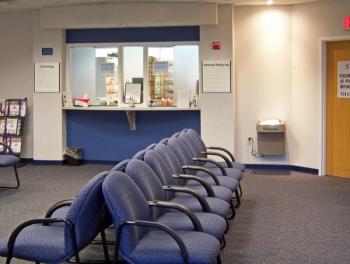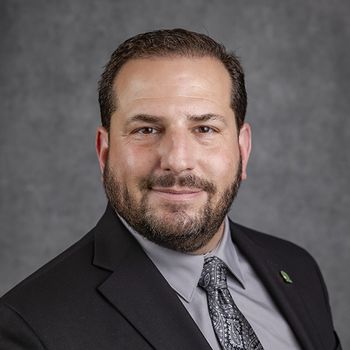
Biomedical research money should go toward greatest disease burden to help Americans the most: NASEM
Key Takeaways
- The U.S. faces a misalignment between research funding and disease burden, necessitating a shift in priorities to address chronic conditions like cardiovascular disease and COPD.
- Recommendations include forming an interagency consortium to track unmet therapeutic needs and aligning research investments with disease burden.
New report identifies ‘misalignment’ between research spending and chronic diseases that affect millions of people.
America’s medical research money needs rearranging to prioritize study of diseases causing the most harm, according to a new report by the National Academies of Sciences, Engineering, and Medicine (NASEM).
The United States has a current “misalignment” between the nation’s disease burden and the areas of therapeutic development in which public and private funders invest. Congress, federal government research agencies and private funders have helped make the nation the world’s leader in biomedical innovation. But now they must change that misalignment between national need and health care discovery.
“As the global leader in scientific innovation, the United States should be able to offer treatments that ease the burden of diseases that affect virtually every family and community,” said Donald Berwick, MD, MPP, FRCP, KBE, co-chair of the report’s author committee. Berwick is president emeritus and senior fellow at the Institute for Healthcare Improvement.
“However, the chronic misalignment of the actual medical needs of the public with where research dollars go has hindered progress,” he said in a news release about the report.
Chronic conditions
The report referred to some chronic conditions that affect millions of people. For example, cardiovascular disease, chronic obstructive pulmonary disease (COPD), and pain conditions, cost billions of dollars to treat each year, creating a large disease burden, but have received relatively low levels of research funding to find new treatments and interventions, according to NASEM.
A news release and related documents published with the report did not appear to mention Health and Human Services Secretary Robert F. Kennedy, Jr., leader of the Make America Healthy Again effort in the administration of President Donald J. Trump. However, Kennedy has emphasized the importance of identifying root causes of chronic diseases that have increased in the population.
“Aligning Investments in Therapeutic Development with Therapeutic Need: Closing the Gap,” was authored by the Committee on Strategies to Better Align Investments in Innovations for Therapeutic Development with Disease Burden and Unmet Needs.” The effort was sponsored by Gates Ventures and the Peterson Center on Healthcare.
Legislation, funding, oversight
The report has a number of related documents that mention Congress; the U.S. Department of Health and Human Services (HHS); two of its big spenders: the Centers for Medicare & Medicaid Services (CMS) and the National Institutes of Health (NIH); and the regulatory Food and Drug Administration (FDA).
“Our report lays out steps the federal government should take to bring our nation’s incomparable research capabilities to bear in producing treatments that could change the trajectory of hundreds of millions of lives,” reporting committee Co-Chair Ellen MacKenzie, PhD, said in a news release. MacKenzie is Bloomberg distinguished professor at Johns Hopkins Bloomberg School of Public Health, where
HHS leadership and review
The first recommendation: Congress should establish and fund an interagency consortium that would track unmet therapeutic needs, and identify mismatches with those needs and current research investment.
The committee also recommended funders consider disease burden and unmet needs when setting priorities and paying for new biomedical research. FDA should maintain programs that expedite development, review and approval of new therapies, but also should impose and enforce post-market study requirements.
“To ensure that regulatory flexibility is exercised in a manner that promotes the approval of drugs that are both safe and effective, the committee recommends that FDA should uphold strong regulatory approval standards,” said the committee’s Recommendation 7. “When FDA exercises flexibility, whether through accelerated approval or outside that pathway, the agency should require rigorous, timely confirmatory studies.”
PPPs for science
NIH, the U.S. Centers for Disease Control and Prevention and other federal agencies have congressionally authorized nonprofits organizations. Those agencies should use their nonprofits more to create new public-private partnerships (PPPs) that focus on mismatches between areas of need and innovation, the committee said.
PPPs have a unique ability to address challenges in innovation, the committee said.
“PPPs could also be particularly useful in keeping effective therapeutics that meet an unmet need on the market when there is a threat of them being pulled, or for developing drugs in therapeutic areas where little to no economic incentives exist for the private sector,” said the report’s action guide for private funders of biomedical research.
Why is CMS involved?
CMS usually is not involved in early stages of drug development, but “its coverage and reimbursement decisions can create strong incentives and ultimately influence investment decisions by research funders.” CMS negotiates drug prices and reimburses for them, giving that agency a key responsibility in drug development, the report said.
“The committee concluded that by aligning public and private reimbursement policies with therapeutic value, greater innovation would occur in therapeutic areas with high unmet need,” said an accompanying policy brief written for CMS.
To that end:
- CMS should use its existing authority to reduce the mismatch between Medicare’s reimbursement for a drug and the drug’s ability to address unmet medical needs.
- Congress should reform regulations on public reimbursement for novel drugs to better align reimbursement rates with evidence of clinical benefit, compared with existing therapeutic drugs.
- CMS should have expanded authority to negotiate drug prices beyond the scope of the Inflation Reduction Act, which granted that power.
- CMS should set reimbursement terms to maximize patient access through favorable cost-sharing, robust formulary coverages, and more tailored application of utilization management tools.
- Congress should support development of a negotiation and access model for one-time curative therapies to ensure patient access to drugs, and market access for creators of novel therapies.
Newsletter
Stay informed and empowered with Medical Economics enewsletter, delivering expert insights, financial strategies, practice management tips and technology trends — tailored for today’s physicians.















